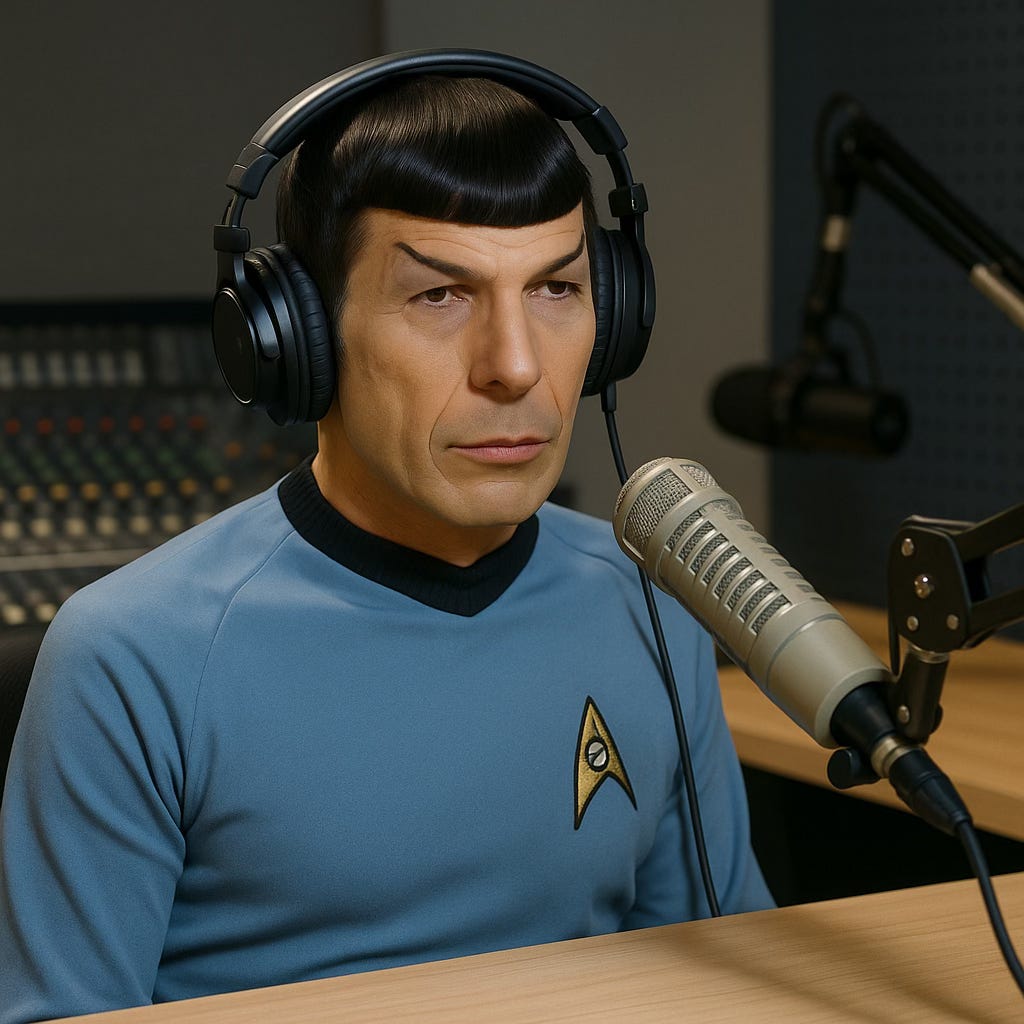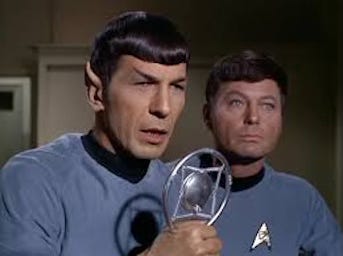Pathways to a Future for Radio
As Mr. Spock was fond of saying, "There are always possibilities."
“Radio is dead!” some media experts say.
“But it’s still number one in car dashboards!” comes the reply.
Regardless of which side you take, the unavoidable truth is this: radio is shrinking. It’s not a growth industry.
Let’s look at the “car dashboard” claim. The reason radio still dominates there is that millions of older cars are still on the road—cars without streaming screens or CarPlay. That will change as those cars are retired. The trend line points one way. Every new model has screens, and they’re getting bigger all the time.
There’s still some daylight left for radio, but it’s late afternoon. Can the industry survive the long night ahead?
Let’s see.
Most of us have heard the joke: “If only there were a live podcast for breaking news.”
“There is,” comes the answer. “It’s called radio.”
But calling it another form of podcasting may not be wrong. As AM and FM frequencies face the real possibility of being auctioned off, smart companies will migrate fully to streaming. If they brand that as live podcasting, radio—or at least news radio—could live on in a new form.
There’s a real opportunity here. News radio remains one of the few formats still showing strength. Talk radio could thrive too, especially if more podcasters embrace live formats and open phone lines. The smart broadcasters of the future may not be “broadcasters” at all. They’ll be streamers. Some already are.
Music radio, though, faces a darker future.
Most people under 50 avoid it. Why sit through long commercial breaks and songs you don’t like when Spotify, Apple Music, or your own playlists are one tap away? Most of us plug in our phones and hear our carefully curated favorites—lossless, better-sounding than FM or even satellite.
As for DJs, they’re nearly extinct. But maybe, like vinyl, they’ll make a comeback. If records can become cool again, maybe DJs can too—especially if they bring personality and taste to streaming. That could open the door for a new generation of music hosts who never worked in traditional radio. They’ll sound different, they’ll connect differently, and that could be exciting.
That will mean there needs to be changes in licensing of music. Right now, the cost is prohibitive for independent personalities.
The danger is what happens when big companies bring radio’s worst habits with them to streaming—I’m talking about endless commercial breaks. Long ad blocks are killing radio, and we’ve known that for decades. And streaming listeners won’t tolerate it. How many of you hit the skip button on podcast ads?
Still, there’s another, smaller path forward for AM and FM: local radio.
In small towns and rural areas, broadcast is still strong.
On a recent trip to smaller towns on the East Coast, my wife and I noticed something. In diners, rideshares, and small hotel lobbies, the music was local radio. When I asked what they were listening to, people answered instantly—with call letters. Not app names. Not streams. Call letters.
But those stations can’t survive when big companies buy them, gut the staff, and pipe in voice tracks from hundreds of miles away. Shareholders may like the savings, but that’s how you hollow out a once-great medium. Even major markets are running on skeleton crews now.
Maybe one smart company will figure out there’s still profit—slow, steady profit—in small markets. It won’t make headlines, but it could make money.
Whatever happens, one thing’s clear: Radio must adapt or die in a post-dial world.
How many of us still remember turning a dial, carefully finding the sweet spot where the signal came in strongest? Probably the same number who remember dialing a phone.
Then again, nostalgia sells. Vinyl proved that. Maybe there’s a market for old-school radios with real knobs, or even a “retro” streaming app that looks like an old tuner. Old becomes cool again. It always does.
And who knows—someday, some old geezer might say: “Back in my day, we had to use Spotify! You kids with your music piped straight into your heads—get off my lawn!”
“Excuse me, sir,” the young whippersnapper replies. “What’s a lawn?”
Sometimes I hate the unidirectional nature of this particular time-space continuum.
What do you think? Share your thoughts and predictions in the comments below.




